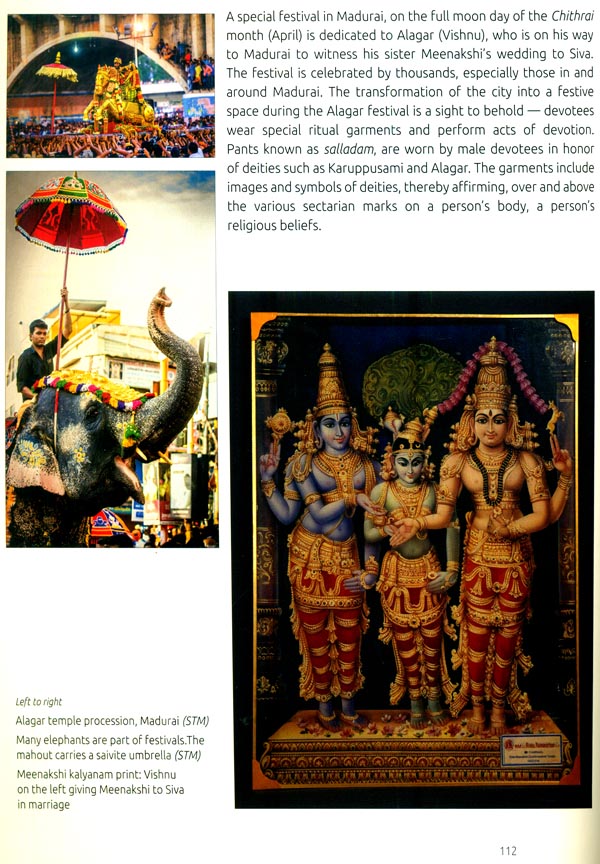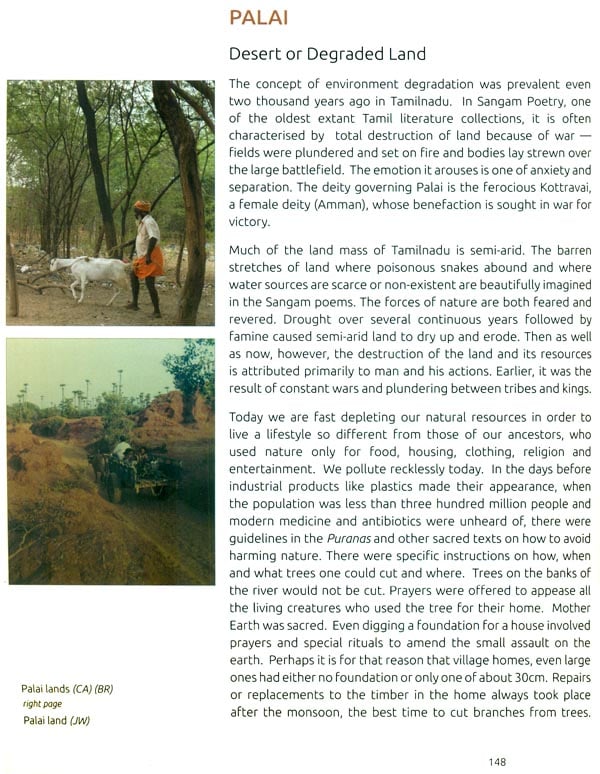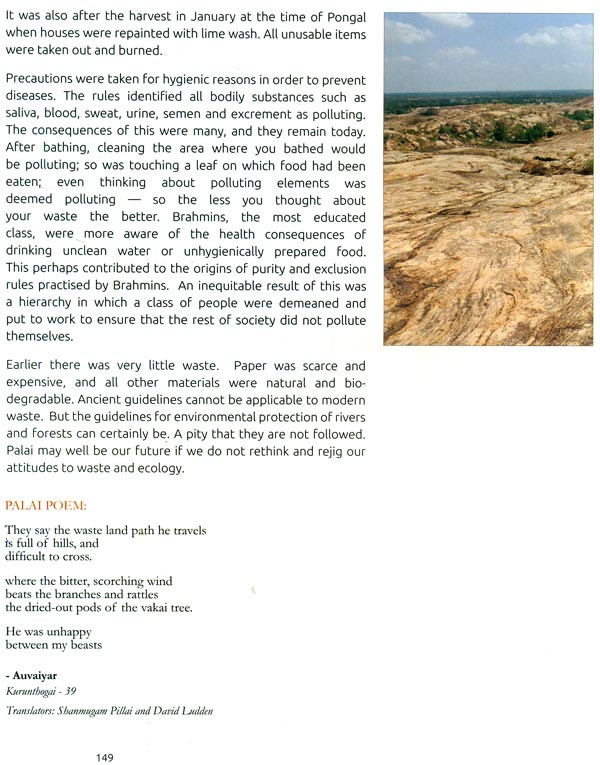
The Tamil Landscape (Culture and Traditions)
Book Specification
| Item Code: | NAQ712 |
| Author: | Deborah Thiagarajan |
| Publisher: | Madras Craft Foundation, Chennai |
| Language: | English |
| Edition: | 2018 |
| ISBN: | 9788193732106 |
| Pages: | 168 (Throughout B/W and Color Illustrations) |
| Cover: | PAPERBACK |
| Other Details | 9.00 X 7.00 inch |
| Weight | 600 gm |
Book Description
This book attempts to give a glimpse, a limited kaleidoscope into the lifestyles of the people of Tamilnadu through their material and intangible culture, which are best illustrated by their architecture, art forms, and festivals of the different regions of the state. The text and photos reflect the vision and collection of the DakhinaChitra Museum which looks at craft, performance, architecture and art through the prism of ecology and social context, particularly as it existed in the early 1900s.
It was the ecology of each region that shaped people's material culture. And within this sphere there was a common belief system that permeated what one did and how one saw the world. Religion formed just one set of beliefs. People lived their daily lives intuitively through another set of beliefs, or rather a fundamental orientation to the world around them. This included a way of relating to their environment and to people, a respect for ancestors, a view of the inseparability of mankind from all living things and a sense of the impact of the cosmos on their lives.
Art and architecture had a certain harmony with each other and the environment based on the materials available from nature and a shared orientation to the world around. Skills were honed to work on the materials at hand. There was an unstated aesthetic sensibility which influenced both the patron and the artisan. Today that harmony has been lost. Every type of material and design is open to all, with influences from across the world, propelled by the fashions dictated by the media. Within this modern chaotic environment, traditional craft, architecture and performing arts speaks of a world in which the artistic vision was generally aligned across various art forms. Few architects today and even fewer town planners and other decision makers take the time to reflect on the aesthetics of the past to understand how the past can guide us into the future.
This book, like the DakshinaChitra Museum, is a small tribute to life in Tamilnadu as it was - it still tenuously exists - in a slower, more agricultural and less monetized, capitalistic and globalized time.
**Contents and Sample Pages**












